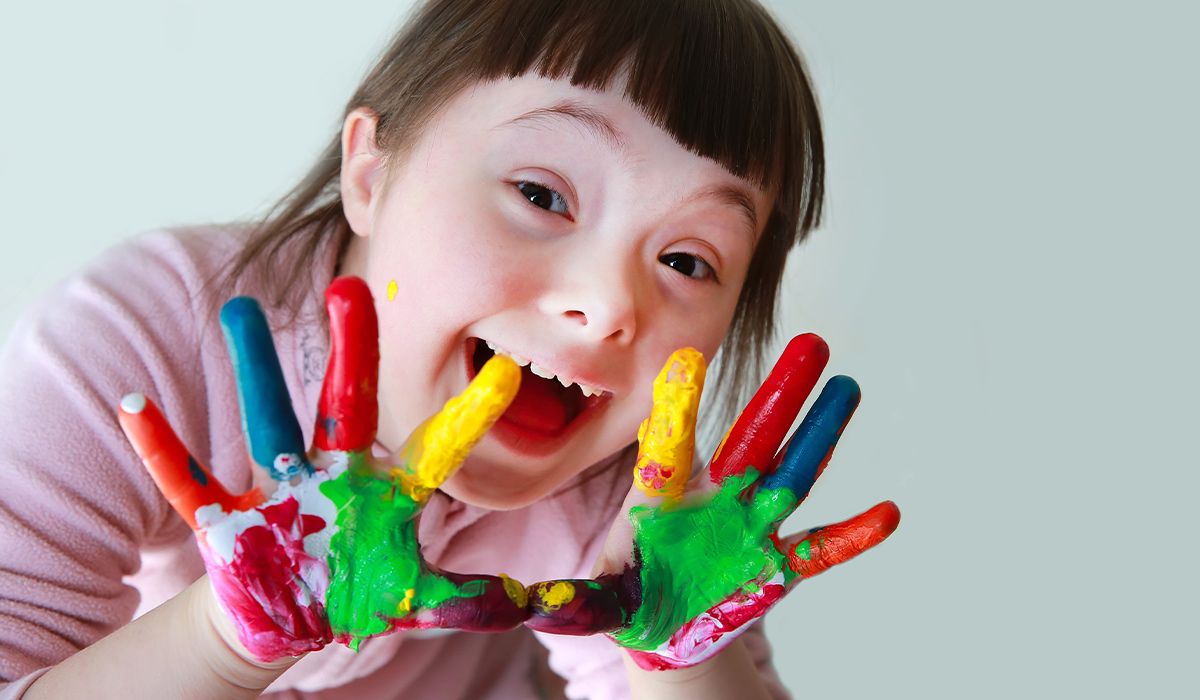Psychology defines the syndrome of executioner and victim as a mechanism of survival and fight for life. This condition is often called “capture attachment.”
The history of Stockholm syndrome dates back to the 1970s. The perpetrators of a bank robbery in Stockholm held hostages. After the prisoners were released, it turned out that the hostages had established positive relationships with the attackers – they did not want to cooperate with the police and refused to testify.
Probably one of the hostages got engaged to one of the kidnappers. These events were the basis for creating the concept of Stockholm syndrome and defining it. This concept is currently used by psychologists to diagnose the unique relationships of victims with their perpetrators and is called Stockholm syndrome.

Stockholm syndrome![]() occurs when four conditions
occurs when four conditions![]() are met:
are met:
Each victim feels threatened and, at the same time, convinced of the possibility of saving themselves by meeting the perpetrator's expectations. A few good gestures on the part of the perpetrator are enough to start the process of feeling sympathy towards them and a special addiction.
Stockholm syndrome is rationally explained by psychology with specific psychological mechanisms. During such a challenging and dangerous situation, the victim goes through traumatic experiences. It is difficult for them to cope with pressure and the feeling of a grand threat. In situations where escape is impossible, each subordinate seeks an alternative to survive.
Defense mechanisms![]() are immediately activated to provide the appearance of peace and stability. The process of being grateful to the perpetrator for every small gesture begins. The first feeling that appears in the victim is grand gratitude that the attacker did not kill them and allowed them to live.
are immediately activated to provide the appearance of peace and stability. The process of being grateful to the perpetrator for every small gesture begins. The first feeling that appears in the victim is grand gratitude that the attacker did not kill them and allowed them to live.
In such situations, every smallest gesture on the perpetrator's part, such as giving them water to drink or allowing them to use the toilet, becomes an incredible kindness of the attacker. A person suffering from Stockholm syndrome no longer treats the matter as their enemy and explains their behavior by the need to achieve the intended goal.
The victim counts on appreciation if they help their tormentor achieve their goal, which is, for example, robbing a bank or extorting ransom for a kidnapping. The endangered person tries to help their perpetrator achieve such a goal, counting on improving their situation. Initial hatred towards the perpetrator can also turn into sympathy and total devotion.
Stockholm syndrome always appears when the person affected by it is effectively isolated from the outside world and finds it difficult to compare their situation with generally accepted norms of behavior.
For every observer of such situations, this paradoxical bond between the perpetrator and the victim is downright incomprehensible and impossible to accept. The victim feels that they are entirely dependent on the perpetrator who has complete power over them. The person feels powerlessness, isolation, humiliation, and the perpetrator's total power over their life and behavior. The perpetrator is treated as a ruler, and every act of normality on their part is interpreted as graciousness and acts of kindness.
Stockholm syndrome can be divided into four stages that the victim goes through:
Stockholm syndrome can often be seen in toxic relationships and relationships between partners![]() . The victim syndrome in a relationship is a typical defensive reaction that gives a sense of being able to survive a difficult life situation. Sometimes, the victim does not even realize that they are suffering from physical or mental violence.
. The victim syndrome in a relationship is a typical defensive reaction that gives a sense of being able to survive a difficult life situation. Sometimes, the victim does not even realize that they are suffering from physical or mental violence.
Psychology distinguishes several mechanisms (traps) that force the victim to remain in an unfair situation:
Stockholm syndrome is closely related to the process of mental enslavement, called brainwashing![]() . The abuser partner tries to enslave the other party and achieve total control over their life by isolating the victim, humiliating them and confirming low self-esteem, demonstrating strength, focusing the victim's attention only on the perpetrator, and temporarily showing kindness and leniency.
. The abuser partner tries to enslave the other party and achieve total control over their life by isolating the victim, humiliating them and confirming low self-esteem, demonstrating strength, focusing the victim's attention only on the perpetrator, and temporarily showing kindness and leniency.
The victim is often unaware of their isolation from the environment and control over their contact with loved ones and friends. The perpetrator repeatedly punishes the victim for trying to reveal what is happening in their relationship, which leads to the partner's loneliness. Emphasizing the low value of the victim makes them blame themselves for the harm they have suffered and become unquestioningly obedient. The victim can never predict which threat the tormentor will carry out. This situation means that the perpetrator's slightest tender gesture or sign of kindness gives the victim hope that the partner's behavior will change.

Stockholm syndrome in the family may affect individuals whose partners or parents abuse them mentally or physically. The person affected by this situation, assuming the role of victim, often has features that make it easier for the perpetrator to use it. These are usually physically weaker people, most often women and children, sometimes in poor health or mental condition.
The perpetrator acts in such a way that they make the victim dependent on them, who has no one to turn to for help. The victim then becomes convinced that the situation is hopeless and that the only way to survive it will be a passive attitude of avoiding provocative behavior and pleasing the perpetrator. For this reason, victims of domestic violence often do not look for a way out of the situation and are reluctant to seek help from appropriate services.
Stockholm syndrome may also occur in the workplace when a superior uses mobbing![]() against a subordinate who submits to such behavior and justifies it. It may often be the case when the victim is afraid of losing their job because they are afraid that, for example, due to low qualifications or the market situation, they will not find another job.
against a subordinate who submits to such behavior and justifies it. It may often be the case when the victim is afraid of losing their job because they are afraid that, for example, due to low qualifications or the market situation, they will not find another job.
This situation may also occur when there is no such threat, and the toxic relationship is the result of psychological predispositions on both the perpetrator and the victim's side. They create a kind of bond between themselves, in which the superior has excessive demands on the victim, which they often cannot meet, or they meet them by devoting their free time to it, pointing out their mistakes, do not appreciate their efforts, criticizes their towards other people, etc. The victim does not oppose such behavior and tries to rationalize and justify it. All this can cause Stockholm syndrome to develop.
Isolation from society, from loved ones, and even from basic information is one of the most critical risk factors for the development of Stockholm syndrome. Long-term separation from the environment causes the victim to lose reference points. When daily contacts are limited to the perpetrator, the victim may gradually begin to accept their perspective as the only available and true one.
Isolated from the rest of the world, without access to information or other points of view, the victim may gradually lose the ability to assess the situation objectively. Without the ability to confront their experience with the perspective of others, they become more susceptible to manipulation and false beliefs imposed by the kidnapper. As a result, their perception of reality may become significantly distorted.
Traumatic events, such as kidnapping and physical or psychological violence, can lead to sudden changes in the victim's mental functioning. When life is threatened, the brain activates defense mechanisms aimed at survival. One such mechanism may be an attempt to establish positive contact with the aggressor. In traumatic situations, people often react in ways that would seem illogical or inappropriate under normal circumstances. Striving for understanding and rapprochement with the perpetrator may be an attempt to find a “safe place” in an impossible situation.
Social support plays a significant role in the process of dealing with trauma. People who had strong social support before the trauma are less likely to develop serious mental health problems after a traumatic event. However, in the case of kidnap or hostage victims who are isolated from family, friends, and generally available support, the risk of developing Stockholm syndrome increases. Isolation from social support not only deprives the victim of the opportunity to confront their experiences with an outside perspective but also deprives them of emotional support that could help them process the trauma.
The victim will not plan to change their life situation and will not take advantage of such an opportunity. The most important are friends and family who will patiently try to reach the victim.
The key is to overcome their negative attitude and perceive them as enemies who want to cause harm. At first, there will often be aggression and screaming from the victim. It is important to be relentless in describing the impact of a toxic relationship in every way possible. Relatives should take into account that the dominant person will try many ways to avoid talking about the abuser.
You can assume the victim will stop answering the phone and opening the apartment door. When excuses about work or other responsibilities are insufficient, they may resort to blackmail. Threats can even include death if the victim is not left alone.
It should be emphasized that the victim can count on help, is loved, and will never be left alone. Avoid too much pressure, condemnation, and judgment. You need to remember the different ways of communicating.
During a conversation with a dominant person, it is worth showing other ways of proceeding. Suggest a change of place of residence or place of work. You can encourage them to seek psychological consultation for an entirely different reason.
The specialist should be informed about this in advance. This trick may succeed if the relatives do not mention the conversation about the executioner. After many efforts, the victim will eventually realize they need support and help. In treating Stockholm syndrome, combining the efforts of family, friends, and a specialist in psychology and psychotherapy is crucial.
The help of loved ones is irreplaceable. Friends and family who patiently support the victim, not discouraged by the fact that they are often pushed away and denied by them, can help them see at some point. They should try to constantly assess the negative impact of the toxic relationship on them and try to loosen it up in every possible way. But – it is challenging because sometimes it can have the opposite effect than intended. The victim defends the perpetrator and may begin to avoid contact with loved ones.

One way for loved ones to support them is to point out other alternative courses of action because the victim often becomes fixated on one solution. You can also encourage the victim to consult a recommended (and informed about the circumstances) psychologist![]() for a completely different problem (because they are unlikely to go through with this particular one of their own free will).
for a completely different problem (because they are unlikely to go through with this particular one of their own free will).
A person with Stockholm syndrome who finally realizes that they need help will certainly need the support not only of their loved ones but also of a psychologist and a psychiatrist.
To sum up, the path to recovery and healthy functioning is a deep understanding of yourself, including your mental and emotional state. Understanding that Stockholm Syndrome is not a victim's choice but the result of the brain's complex defense mechanisms in response to traumatic experiences may be a step toward successful treatment.
Understanding one's psyche gives the individual a tool to recognize and confront their fears, thoughts, and feelings. By understanding the mechanisms that led to the development of the syndrome, a person can begin to process and counteract the trauma, counteract negative thought patterns, and build healthy coping mechanisms. Accepting your condition is equally important because it allows you to understand that the need for help is not a sign of weakness but a conscious step towards a better life.
It cannot be emphasized enough how important professional help is for people experiencing Stockholm syndrome. Although independent work on yourself and the support of family and friends are valuable, the support of specialists is often required to effectively deal with such a complex phenomenon.
Table of Contents

Being polyamorous means having relationships with two or more partners. It is not a mental disorder. What does a polyamorous… read more »

Munchausen Syndrome is a psychological disorder where an individual deliberately exaggerates, fabricates, or induces physical or psychological symptoms in themselves.… read more »

What are the signs of narcissistic personality disorder? Learn, when it is time to start therapy. Check out, the ways… read more »

An introvert is a person with a special personality. Find out about the characteristics of introverts and how being an… read more »

Mental health is the foundation of a good life. Learn strategies on how to improve your mental well-being. Create a… read more »

Post-traumatic stress disorder is a specific psychological reaction to a highly stressful event. How does it manifest itself? What is… read more »

An extrovert is an open and sociable person. The characteristics of this personality type affect various aspects of life. Find… read more »

Ehlers-Danlos Syndrome is a group of diseases with a genetic basis. Learn all the symptoms associated with EDS. Find out… read more »

Down syndrome is a set of features that are the result of the presence of an extra chromosome 21 in… read more »